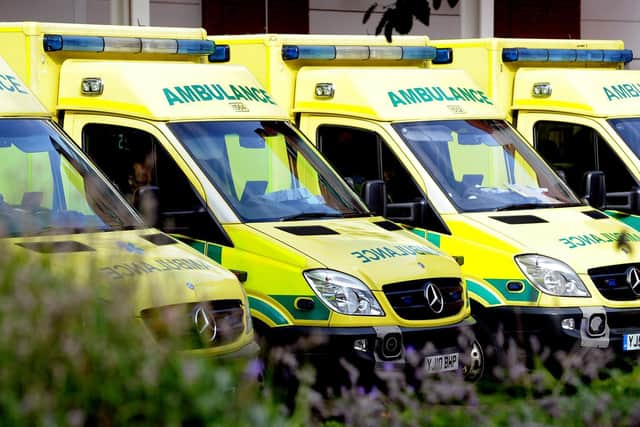Yorkshire coronavirus hospitalisations continue to rise as admissions in the South level off
Dr Rupert Pearse, from the Intensive Care Society, told BBC Radio 4’s World At One the situation was still serious in areas such as Yorkshire.
He said: “It varies a lot around the country and it varies a lot between hospitals, and that’s quite important to realise.
Advertisement
Hide AdAdvertisement
Hide Ad“It looks as though infections have peaked in London… but are still on the rise in the north-west of England and around Yorkshire, so there is still cause to be concerned.


“But perhaps mostly, hospital admissions tend to lag seven to 10 days behind the peak in infections and intensive care medicine unit admissions maybe 48 hours after those, so those hospitals that are very close to the maximum number of hospital beds that they can allocate for Covid are still very worried about what will happen in the coming days.”
Although the infection rate of the virus has fallen week-on-week across every region of England, hospitalisations continued to rise.
In Yorkshire and the Humber infection rates have fallen from 319.2 cases per 100,000 people to 283.5.
Advertisement
Hide AdAdvertisement
Hide AdBut Yorkshire and the North East - the region for which the NHS measures - has a record 3,604 in hospital with the disease, up 12 per cent on the week before.
In London, the East of England and South East – which have had some of the highest rates – the rise has been by less than five per cent.
However, Yorkshire and the North East had administered the second highest number of vaccinations so far, NHS England data showed.
Between December 8 and January 17, 681,317 jabs were given in the region.
Advertisement
Hide AdAdvertisement
Hide AdProfessor Stephen Powis, national medical director for the NHS in England, said it will take a number of weeks before a slowdown in infection rates has an effect on the number of people in hospital.
On when the current lockdown measures will have an effect on hospital admissions, he said: “I think we are beginning to see an effect of lockdown measures.
“We know the lockdown measures work, we saw that in April, we saw it in November.
“And we are beginning to see it now and that’s good news because, of course, we have also had this new strain which is more transmissible.
Advertisement
Hide AdAdvertisement
Hide Ad“So although infection rates are beginning to slow, maybe here in London and a little bit less so in the rest of the country, it will be a number of weeks before we start to see that effect on the number of people in hospitals.”
It comes as northern MPs were being urged to back calls for action to address health inequalities between the North and the South.
The recently formed Inequalities in Health Alliance (IHA) is demanding a cross-government strategy to reduce health inequalities which have been further highlighted by the coronavirus pandemic.
The 10 local authorities in England with the lowest life expectancy from birth are all in the North and all but one of those with the highest are in London or the South East.
Advertisement
Hide AdAdvertisement
Hide AdIn many cases, life expectancies also roughly correlate with Covid-19 cases and deaths.
And the IHA says the pandemic has exposed and exacerbated deep-rooted health inequalities, with Covid-19 having a disproportionate impact on different communities.
Professor Andrew Goddard, who is president of the Royal College of Physicians (RCP) - which leads the 150 not for profit organisations in the IHA - said: “Let something good come out of this awful pandemic – let it be the moment when we said that enough was enough and took the steps necessary to tackle health inequalities, to end the unforgiveable situation by which people in one place live longer than those in another or spend more of their lives in poor health.
“We need a cross-government strategy because health inequalities often arise from factors outside of individuals’ control, such as not having enough money to eat healthily or to be able to find or afford better housing.”
Comment Guidelines
National World encourages reader discussion on our stories. User feedback, insights and back-and-forth exchanges add a rich layer of context to reporting. Please review our Community Guidelines before commenting.